Since hybrid chicken breeds have different broodiness from their parents, the offspring inherit several new characteristics.
Unlike pure breeds, hybrids are crossbred between and among Leghorn, Rhode Island Red, and Light Sussex. They make great table birds and have been more common among hybrid layers and backyard chicken keepers.
So, I have collected 20 hybrid chickens for eggs and meat for backyards, small-scale farms, and big poultry farms.
1. Golden Comet
Golden Comets are beautiful golden birds with reddish-brown plumage.
These hybrid chickens are true to their name, with golden, deep red to pure white, providing a shimmering look from a distance.
Unlike traditional hens, they have big combs and wattles with yellow beaks and feet.

These blond chickens are small to medium-sized birds that weigh around 5 lbs.
However, Golden Comet hens are prolific layers with 300 brown eggs per year. They start laying as early as 16 weeks.
Their calm, friendly, and docile temperament makes them one of the best family farm birds or backyard flocks. Even children can take good care of small flocks.
Besides, they are both heat and cold-hardy fowls.
Origin: Crossbreed between Rhode Island Red and White Leghorn
Egg Production: 250–330 large brown eggs per year
Adult Weight: 4 – 8 lbs
Temperament: Docile, friendly, and easy to handle
Best For: Prolific layers, small homesteads, backyard flocks
2. ISA Brown
ISA Brown is one of the best hybrids for egg production, with 300 large, medium to dark brown eggs per year.
You can expect 6 eggs per week after hens reach between 24 weeks and 26 weeks.
These chickens look like Rhode Island Reds with a lighter shade of reddish-brown plumage that seems more chestnut brown. They also have white with brown speckles and white tail feathers.

Besides, ISA Browns boast a rectangular-shaped body with a lean build.
The birds have short, straight tails that remain upright.
While roosters have a stocky and broad build, hens have medium-sized bodies. Both have a single, red upright comb and red wattles. Their earlobes can be either white or red.
ISA Brown chickens are quiet, docile, and nonaggressive fowls. They are child-friendly and make them great backyard pets.
Origin: Crossbreed of multiple breeds, including Rhode Island Reds and White Leghorns
Egg Production: 300+ brown eggs annually
Adult Weight: 4–6 lbs
Temperament: Gentle and affectionate
Best For: Beginners and high egg yield seekers
3. Sapphire Gem
This is a striking blue or lavender-colored hybrid and truly justifies its name.
Both male and female chicks look almost the same, but boys possess white dots on their heads or wings. And girls flaunt blue with gray or gold feathers.
However, as adults, roosters develop more pronounced and brighter-colored combs than hens.
They have dark feathers on the head and neck, and the feather colors fade down the body.

Keepers expect hens to start laying between 4 and 6 months. These hens can make 260-280 extra-large brown eggs a year, with 5 eggs per week.
Sapphire Gem chickens are also calm, friendly, and quiet birds.
They are great foragers and thrive well in both hot and cold climates, which makes them an ideal choice for many habitats ranging from small and backyard flocks to large farms. from
Origin: Derived from Blue Plymouth Rock and Barred Plymouth Rock
Egg Production: 250+ brown eggs per year
Adult Weight: 4 – 7 lbs
Temperament: Active and independent
Best For: Free-range homesteads, family-friendly farms, or any flock
4. Black Star
Black Stars are medium-sized birds with slender bodies and jet-black plumage that offer a greenish sheen under sunlight.
While males have black with white barring feathers, females have black feathers with a gold or copper tint.
Besides, roosters have a much more black appearance with silver stripes, highlighting their hackle feathers.
This is a dual-purpose hybrid. Chickens can produce medium-sized meat fowls with roosters weighing 7 – 8 lbs and hens weighing around 5 lbs.

You can make the ladies lay eggs in 20 weeks.
They are known for making excellent layers with 300 extra-large brown eggs per year. Hens only make noise when they are laying eggs.
But they don’t go broody.
Besides, chickens make friendly, quiet, docile, cold, hardy, and low-maintenance flock.
Origin: Crossbreed between Rhode Island Red/ New Hampshire rooster and Barred Rock hen
Egg Production: 250–300 brown eggs annually
Adult Weight: 5 – 8 lbs
Temperament: Hardy and friendly
Best For: Cold climates and mixed-use homesteads
5. Red Star
Red Star is also a medium-sized fowl alternative to Black Star, a reliable hybrid layer.
After 18 to 22 weeks, hens start laying medium eggs. They are known for commercial brown egg production with 300-340 per year.
When you buy chicks from hatcheries, make sure that the males are light yellow and some black. If you choose hen, look for red down.

When adults, both have light brownish-red to rust plumage.
But feather colors vary from black to white. They also have single red combs and yellow beaks and legs.
It’s difficult to claim the behavior of these chickens. They are docile to keepers but can be aggressive to flockmates. Also, they can fly and take a flight for a short distance.
Origin: Multiple crossbreeds, including Rhode Island Red and Delaware hen
Egg Production: 300+ eggs per year
Adult Weight: 6 – 8 lbs
Temperament: Calm and easy to raise
Best For: Small backyard flocks
6. Amberlink
Amberlinks are ardy, productive hybrid birds with white feathers with beautifully amber-colored accents or brownish-red streaks.
These streaks are placed on their neck, wingtips, and tail feathers.
These chickens have robust, stocky shape and highlight a yellow beak, a single red comb, and bright red wattles.

You can also tell Amberlink with their legs, which can be either yellow or white-tinted.
Besides, they are calm, docile, and easy to handle, which makes them ideal for first-time chicken owners.
Chickens are also social and enjoy the company of other birds. They also thrive well in both warm and cold environments.
Keepers can expect them to lay eggs around 18 – 20 weeks. Amberlink hens are excellent layers with 250 – 300 eggs, medium to large-sized brown eggs.
Origin: Crossbreed between Rhode Island Red and White Leghorn
Egg Production: 250+ brown eggs annually
Adult Weight: 4 – 6 lbs
Temperament: Curious and active
Best For: Both confinement and free-range setups, large or mixed flocks
7. Austra White
I wonder how clean and uniform the Austra Whites look when I look at their sleek, white feathers. These chickens look similar to White Leghorns.
They are medium-sized fowls with beautiful white plumage dotted with black specks.

The birds are calm, docile, and friendly, making an ideal flock for farms and homesteads.
They also have foraging skills and make great free-range chickens.
Austra White hens are also known for their prolific egg-laying capacity. They can give large, white, or cream-colored eggs, typically more than 250 eggs.
The ladies start laying around 18-28 weeks.
Origin: A Crossbreed between Black Australorp and White Leghorn
Egg Production: 250–300 white eggs yearly
Adult Weight: 5 – 6.5 lbs
Temperament: Friendly and good for beginners
Best For: Hot and cold climates, home egg production
8. California White
California White chickens are lightweight birds with white and black flecks. The dense areas are around the neck and tail.
But I have all white birds in the image.
You can say them to be excellent laters with 5 – 6 white eggs per week.
I must tell you that they are active but not very aggressive but somewhat aloof. Don’t worry, they are friendly and low-maintenance for inexperienced keepers.

Also, California White makes great chickens for small and medium-sized flocks.
They work as layers as well as broiler chickens and do well in backyard or urban farms. But you need to take care of their flight.
This high-efficiency breed starts laying around 17 weeks of age.
Origin: Crossbreed of White Leghorn and California Grey
Egg Production: 300+ large white eggs annually
Adult Weight: 5 – 6 lbs
Temperament: Calm and good for small spaces
Best For: Homesteaders looking for steady egg layers
9. Bluebell
Bluebell Chickens, also known as Beechwood Blue Chickens, are large, heavy birds that look like Copper Blue Maran.
So, don’t be confused!
Bluebell is a classic hybrid that possesses blue plumage ranging from pale to darker in accent. Some have dark collars, whereas many get grey.
Chickens have a dark black head that fades down the smokey blue feathers to the tail.
You don’t see their legs with feathers, bare legs.

Anyway, they are docile, quiet, nonaggressive, and hardy and robust.
These fowls also do not fly, so that keepers can handle them easily. They can expect around 240 brown eggs from Bluebell Chickens.
Origin: Crossbreed between Rhode Island Red Rooster and Blue Maran hen
Egg Production: 200–250 light brown eggs per year
Adult Weight: 4 – 5 lbs
Temperament: Active, independent
Best For: Free-ranging environments
10. Hy-Line Brown
Hyline Brown is considered to be another version of the Red Sex link, which was created by crossbreeding a white hen with a red rooster.
They have brick red or brown feathers.
Hens are known for earlier laying after only 3.5 – 4 months under suitable conditions, hence the top commercial egg-laying breed.

You can expect large, dark brown 300+ eggs for 80 weeks.
They can give eggs throughout winter if provided with enough artificial light.
But they don’t go broody and have less life expectancy, only 2 – 5 years. However, they are calm and friendly with keepers.
These hybrid chickens can cut down the feed cost as they do well in a free-range environment.
Egg Production: 300+ brown eggs per year
Adult Weight: 5 lbs
Temperament: Hardy, disease-resistant
Best For: Free range system, high-yield homesteaders
11. Novogen Brown
I find Novogen Brown chickens the most capable of thriving in the given condition. They can tolerate both heat and cold environments.
These are brown fowls with white under-feathers. Mostly, roosters have more white plumage, and hens are rich reddish-brown.

Do you know Novogen Brown was bred in France in the mid-1990s?
They are calm and dual-purpose birds, which produce extra-large brown eggs when they are 18-20 weeks old. After 72 weeks of lay, they yield more than 300 eggs per year.
Origin: Cross between the Rhode Island Red and Rhode Island White
Egg Production: 300+ brown eggs per year
Adult Weight: 4 – 10 lbs
Temperament: Docile and easy to raise
Best For: Beginners and commercial use
12. Dekalb White
Dekalb White chickens are medium-sized birds created in a lab.
You can tell them to have vertical, with a straight back and slightly protruding breast, well-shaped belly.
They have a small, white head and a broad and short neck. Their highlights include short paws and a red, leaf-shaped, droopy comb.

The chickens look clean, with plumage and yellow legs.
Birds are calm and quiet, so they are ideal for urban farms, homesteads, or backyards. After 4 months of raising, Dekalb White lay up to 350 eggs.
Origin: Bred by Dekalb Poultry Research Company
Egg Production: 320+ white eggs annually
Adult Weight: 2 – 4 lbs
Temperament: Energetic and good for warm climates
Best For: Large homesteads, white egg layers
13. Hubbard Redbro
After layers, let’s talk about some broiler hybrids or hybrids for meat production. The thought that came to you was Cornish Cross, didn’t you?
Apart from that, Hubbard Redbro is also a fine breed.
Redbro chickens are large with big heads and dense feathers. They come in several colors, such as red, brown, and white.
They also have small beaks and pod-shaped, bright earlobes. Chickens have robust, muscular legs with well-shaped metatarsals for meat mass.

The birds can reach anywhere between 6 and 7.3 lbs at 9 to 11 weeks. But they produce flattened weight after six months of raising.
It’s not only meat; they also produce decent numbers of eggs. 160 eggs per year is not a bad yield for meat-producing chickens.
Origin: Crossbreed of Cornish chickens with fighting breeds of birds
Meat Production: Fast-growing and high-yielding
Adult Weight: 6 – 7 lbs
Temperament: Robust and active breed
Best For: Sustainable meat production
14. Cobb 500
Cobb 500 broiler breed is also a lab creation. It can be a good alternative to Ross 308.
You can distinguish 500 by its snow-white plumage. It is one of the leading commercial broiler breeds. As they are bred for meat, hens and roosters have minimal weight differences.
They are around 5 lbs and ready for slaughter in 30-45 days. Also, their meat-to-bone ratio is around 73% – 27%, which is really good.

The chickens gain weight at 11 weeks and later decrease. Thier meat looks nice with naturally yellow skin.
They are calm, friendly, and fearless of human presence. Sometimes, they can be aggressive and cannibalistic.
Also, they cannot tolerate cold environments and require a warm coop.
But the good news is that Cobb 500 are fast growers, disease-resistant, and highly productive.
Origin: Cobb-Vantress
Meat Production: High feed conversion rate
Adult Weight: 3 – 5.5 lbs
Temperament: Calm and suitable for confinement
Best For: Meat-focused homesteads
15. Ranger Broiler
Ranger hybrid contains several broiler chickens, including Gray Ranger, Red Ranger, Freedom Ranger, and Rainbow Ranger.
So, they look in multiple colors, ranging from grey and red to mixed colors. Also, they have different breeding origins.

For example, Gray Rangers are bred from Barred Rock and Speckled Sussex.
But all these chickens grow to 5 to 6 pounds in 9 – 11 weeks. So, you need to raise 16 – 20 weeks for 7 – 8 lbs.
They have yellow legs and tender, tasty meat with white skin. Your chickens can dress out around 68-70% of their live weight.
I like this hybrid, which does good in a pasture-raising environment.
Origin: Multiple chicken breeds
Meat Production: Slower-growing but flavorful meat
Adult Weight: 8 lbs
Temperament: Active and good for foraging
Best For: Sustainable meat production.
16. Speckledy
Speckledy is a docile, easily handled hybrid that resembles a Marans.
But Speckledy chickens are far more prolific egg layers.
They can lay around 280 dark chestnut brown eggs. after the age of 22 weeks. You can also sell the birds at the market weight between 16 weeks and 20 weeks.

These birds highlight black and white mottled plumage.
They are cuckoo-colored fowls with a mix of colors ranging from very dark grey to silver.
They also have deep breasts, upward-pointing tails, and yellow legs. The chickens also display medium red combs and smooth faces.
Their wattles and earlobes are small and curved and mottled beaks.
Speckled chickens make good free-range birds with silky soft feathers and like foraging for food.
Besides, these birds are friendly and docile, adaptable, and ideal for running or free range.
Origin: Crossbreed of Rhode Island Red and Maran
Egg Production: 250+ dark brown eggs annually.
Temperament: Friendly and good for backyards.
Best For: Those who love dark brown eggs.
17. Lohmann Brown
Lohmann Brown is an amiable and docile, friendly hybrid that can lay roughly 5 to 7 eggs every week.
They start laying eggs around 19 weeks and produce 290 – 320 eggs for the age of 72 weeks.
The chickens are horizontally shaped and have straight and broad backs and loins, and round and huge stomachs. Their tail tilts at a 90-degree angle with the horizon.
Also, they have short legs, underdeveloped muscles, and breasts.

These birds have caramel or brown-colored plumage with dark areas around their vents and white feathers at the tips of their tail.
They make a commercial hybrid similar to ISA Brown.
Also, they are sturdy backyard chickens and are more confident than flighty breeds.
Origin: Crossbreed of Rhode Island and White Rock breeds
Egg Production: 300+ brown eggs per year
Adult Weight: 4 – 5 lbs
Temperament: Hardy and docile
Best For: High-yield egg production, backyard pets
18. Sussex Star
You will love watching Sussex Stars with black-speckled necks and white bodies foraging in the grass.
They are extremely medium-large, docile, hardy, and friendly chickens. Also, they are nonaggressive, so they make good mates in any given flock.
The chickens also look similar to Light Sussex, with white and black collars.
These fowls are known for skillfully laying 250 to 300 light brown eggs. Also, keepers can raise them in both free-range or confined coop systems.
Overview: A hybrid of Light Sussex and Rhode Island Red
Egg Production: 260+ light brown eggs annually
Adult Weight: 7 -9 lbs
Temperament: Friendly and adaptable
Best For: Cold climates
19. Bovan Brown
Bovan Brown is known for being a reliable brown egg layer.
They are brown birds with white spots on the body and a white tail tip. Their wattles, lobes, and comb also complement the plumage with a red shade.

These are docile, hardy, and gentle fowls that greet the keepers well, making good pets.
But you can raise these hybrid birds for dark brown-colored eggs. They can make more than 400 eggs in 18 to 100 weeks. But don’t be so greedy; the number may vary in free-range or in a colony.
Origin: Bovans company
Egg Production: 400+ eggs per year
Adult Weight: 5 lbs
Temperament: Calm and easy to manage.
Best For: First-time chicken keepers.
20. Sasso
Sasso chickens are dual-purpose birds that reach the average market weight of 5 – 6 lbs at the age of 10-12 weeks.
The keepers can find them heavy birds with long keels and light, speckled plumage. Their feathers include colors ranging from red brick and black to fawn.

The chickens also boast a small head, broad chest, and smaller wings.
It makes sense to raise Sasso for meat as they have more muscle mass than standard broilers.
They also give 120-250 eggs per year after they are 6-8 months old.
Origin: Derived from Rhode Island Red
Egg Production: up to 250 eggs annually
Adult Weight: 5 – 6 lbs
Temperament: Active and adaptable
Best For: Rural homesteads and free-ranging
Final Thoughts
Hybrid chicken breeds are often bred for more yield, unique appearance, and desired characteristics.
So, it’s on keepers to select the ideal hybrids for their target purposes. So, you can compare the egg numbers, meat production, feed conversion, or a broad breast.
Besides, fast growth rate, body weight, and rising conditions are also considered for table hybrids or hybrid layers.



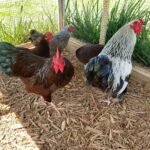
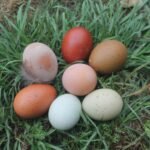
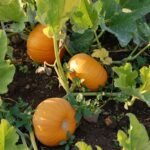
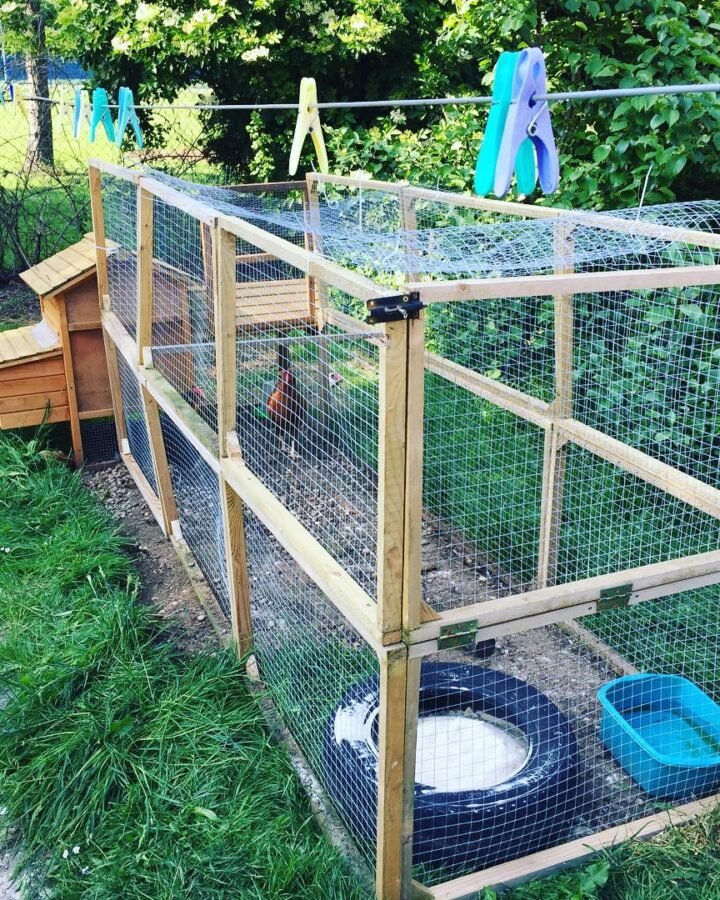

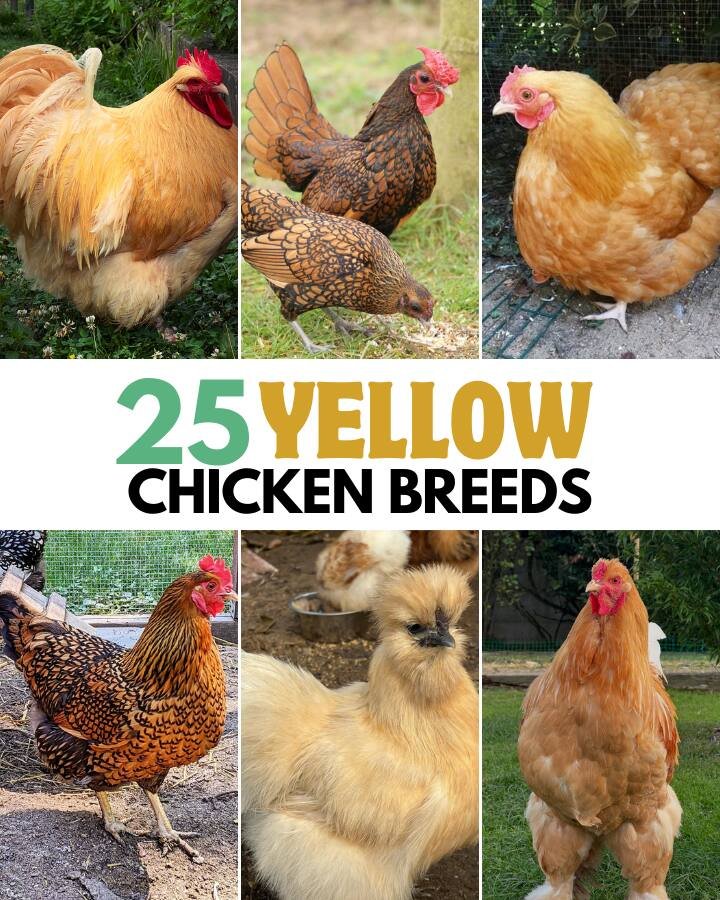
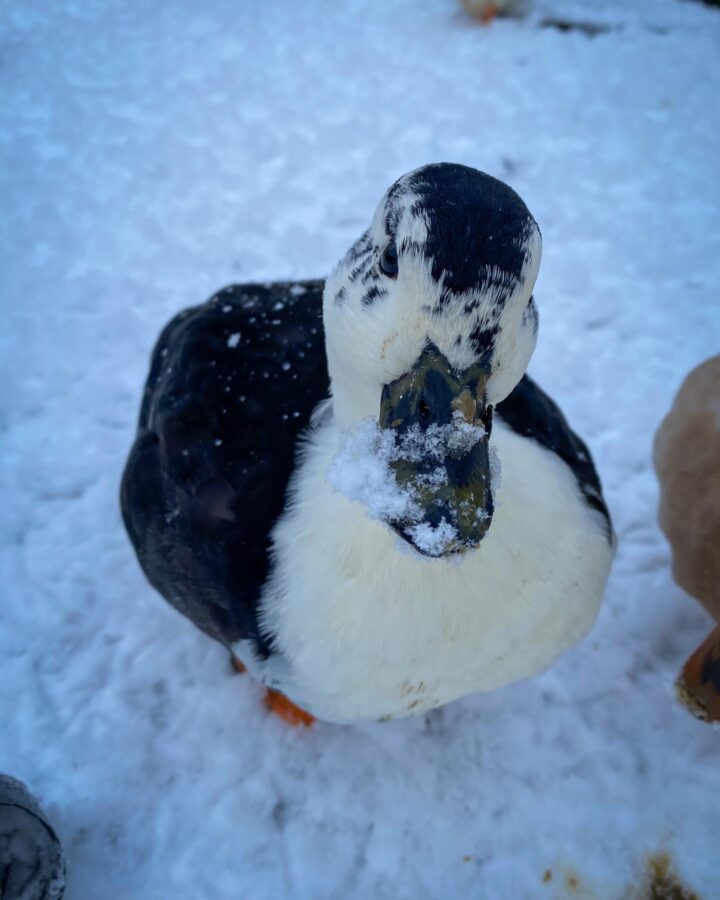
Leave a Reply